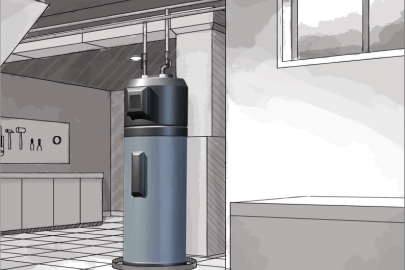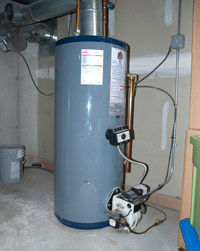How to Effectively Care for Your Home's Hot Water SystemCaring for Your Home's Hot Water System: Key Guidelines
How to Effectively Care for Your Home's Hot Water SystemCaring for Your Home's Hot Water System: Key Guidelines
Blog Article
What are your insights and beliefs on Tips on Maintaining a Water Heater?

Hot water is vital for daily convenience, whether it's for a refreshing shower or cleaning dishes. To guarantee your warm water system runs effectively and lasts longer, routine upkeep is essential. This write-up offers functional tips and understandings on how to preserve your home's warm water system to stay clear of interruptions and expensive repair services.
Intro
Maintaining your home's warm water system could seem challenging, yet with a few easy actions, you can ensure it operates efficiently for years ahead. This guide covers whatever from recognizing your hot water system to DIY maintenance ideas and knowing when to call in specialist help.
Value of Keeping Your Warm Water System
Normal maintenance not only prolongs the life-span of your hot water system yet also ensures it runs successfully. Neglecting upkeep can lead to reduced performance, higher energy costs, and even early failure of the system.
Signs Your Hot Water System Requirements Upkeep
Recognizing when your hot water system needs interest can protect against significant problems. Look out for indications such as inconsistent water temperature level, strange sounds from the heater, or rustic water.
Flushing the Water Heater
Purging your hot water heater removes debris accumulation, improving efficiency and prolonging its life.
Monitoring and Changing Anode Rods
Anode poles prevent rust inside the storage tank. Evaluating and changing them when worn out is essential.
Complicated Concerns Calling For Specialist Aid
Instances consist of major leaks, electric troubles, or if your hot water heater is consistently underperforming.
Routine Professional Upkeep Benefits
Professional maintenance can include complete inspections, tune-ups, and making sure conformity with safety and security standards.
Examining and Changing Temperature Level Setups
Readjusting the temperature settings ensures ideal efficiency and safety.
DIY Tips for Maintenance
You can do numerous upkeep tasks yourself to keep your hot water system in top problem.
Looking for Leakages
Consistently evaluate pipelines and connections for leakages, as these can bring about water damages and greater costs.
Recognizing Your Hot Water System
Prior to diving into maintenance jobs, it's useful to understand the basic components of your hot water system. Normally, this consists of the hot water heater itself, pipelines, anode rods, and temperature controls.
Regular Monthly Maintenance Tasks
Regular month-to-month checks can assist catch minor concerns prior to they intensify.
Examining Stress Relief Valves
Examining the stress relief valve ensures it operates correctly and protects against too much stress build-up.
Protecting Pipes
Insulating warm water pipelines decreases heat loss and can conserve energy.
When to Call a Professional
While do it yourself maintenance is beneficial, some issues require specialist knowledge.
Conclusion
Normal upkeep of your home's hot water system is vital for efficiency, durability, and price savings. By following these ideas and understanding when to seek professional aid, you can guarantee a reliable supply of warm water without unexpected disruptions.
How to Maintain an Instant Hot Water Heater
Before tinkering with your hot water heater, make sure that it’s not powered on. You also have to turn off the main circuit breaker and shut off the main gas line to prevent accidents. Also turn off the water valves connected to your unit to prevent water from flowing into and out of the appliance. 2. When you’re done, you have to detach the purge valves’ caps. These look like the letter “T” and are situated on either side of the water valves. Doing so will release any pressure that has accumulated inside the valves while at the same time avoid hot water from shooting out and burning your skin. 3. When the purge valves’ caps are removed, you have to connect your hosing lines to the valves. Your unit should have come with three hoses but if it didn’t, you can purchase these things from any hardware or home repair shops. You can also get them from retail stores that sell water heating systems. Read the user’s manual and follow it to complete this task properly. When the hosing lines are connected, open the purge port’s valves. 4. You should never use harsh chemical cleaners or solutions when cleaning your unit. Make use of white vinegar instead. It should be undiluted and you’ll probably use about 2 gallons. 5. Now flush your water heater. This task should probably take about 40 minutes. We can’t give you specific directions for this because the procedure is carried out depending on the type, model and brand of your heater. With that being said, refer to the user’s manual. 6. When you’re done draining the unit, you have to turn off the purge port valves again. Remove the hosing lines that you earlier installed on each of the water valves. Put the valve caps (purge port) back in their respective places and be very careful so as not to damage the rubber discs that are found inside these caps. 7. Now that everything’s back in place, check your user’s manual again to find out how to reactivate your water heating system. 8. Once it is working, turn one of your hot water faucets on just to let air pass through the heater’s water supply pipes. Leave the tap on until water flows smoothly out of it. https://www.orrplumbing.com/blog/2014/september/how-to-maintain-an-instant-hot-water-heater/

We were made aware of that write-up on Tips on Maintaining a Water Heater from someone on a different web blog. Are you aware of anybody else who is intrigued by the niche? Why not share it. Thank you so much for going through it.
Start Now Report this page